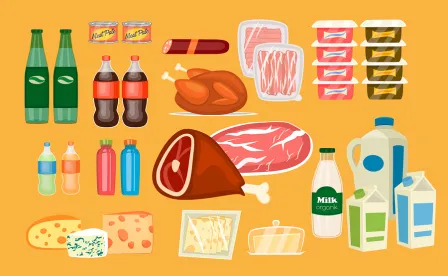Would FDA testing of feedlots for bacteria promote safer vegetables? Would it decrease the availability of and increase price of meat? You might ask, what do feedlots have to do with vegetables? Concentrated Animal Feeding Operations (CAFOs) are facilities where large numbers of cattle, pigs, etc., are raised for meat production. CAFOs produce large amounts of manure and urine. These byproducts can be used for fertilizer, but they also harbor a multitude of bacteria – some good and some bad. When CAFOs are located in proximity to farms that produce vegetables, the possibility of contamination arises, either through water runoff or wind (airborne transmission) of bacteria from the CAFO to the vegetable field.
Earlier this year, the Expanded Food Safety Investigation Act (EFSIA) was introduced in both the U.S. Senate and House of Representatives. The Act proposes to give the FDA access to CAFOs to perform microbial testing as part of a foodborne illness investigation. EFSIA was originally introduced in 2019, but was not enacted. House sponsor of EFSIA, Congresswoman, Rosa DeLauro, called the FDA “weak and disempowered.” Quoting Sarah Sorscher, Director of Regulatory Affairs, Center for Science in the Public Interest, Congresswoman DeLauro claimed:
When an outbreak of food poisoning occurs, investigators should have all the tools they need to find its source. This legislation provides an important new tool for that work by allowing investigators to test for microbes on farms, shedding light on how foodborne illness can move between animals, plants, and people.
But will testing CAFOs for bacteria actually lead to safer vegetables? As you might imagine, CAFOs are filled with bacteria – there is bacteria in the soil, in the air and in the animals, as well as their waste products. Any testing of CAFOs for bacteria seems necessarily destined to find multitudes of bacteria. The premise of EFSIA is that when a foodborne illness outbreak occurs, bacterial DNA from the people impacted can be analyzed and, perhaps, matched with a particular farm or manufacturer in order to pinpoint the source of the contamination. Produce growers and packers already operate under a regulatory framework designed to minimize bacterial contamination and identify contaminated produce. Meat processors do also. When an outbreak occurs, tracing purchased food products to farms can already be done. However, the FDA often takes months in this process. Further tracing to CAFOs would likely prolong the investigation.
When an outbreak occurs, tracing purchased food products to farms can already be done. However, the FDA often takes months in this process. Further tracing to CAFOs would likely prolong the investigation.
The ubiquity of bacteria is an additional complication. It would seem reasonable that farms in close proximity would have similar strains of bacteria, as water carrying bacteria might flow through multiple farms. The wind could blow bacteria for miles across multiple farms. Even with DNA testing, how can we know for certain where a particular strain of bacteria originated or how it arrived at the location at which it might have caused contamination? Could bacteria from a farm that was never tested spread to a second farm, that is then tested and erroneously identified as the source of the contamination?
Some detractors of EFSIA have criticized the FDA’s ability to investigate and carry through on food safety initiatives. Others have noted that contamination concerns are best controlled at the final processing and packaging phase. Both avenues of criticism have merit.
Consider for a moment all of the possible vectors of contamination of food before it reaches your plate. Whether the farms produce meat or vegetables, the dirt, water, and surrounding air are all sources of bacteria. The harvest can generate additional vectors of contamination – from workers who do the harvesting to equipment used to process the food. Even after food is sold to consumers, poor food handling processes can introduce contaminants.
How will another layer of regulation impact the price and availability of meat products?
Don’t forget the financial cost. How will another layer of regulation impact the price and availability of meat products? Does anyone think that testing of CAFOs won’t find harmful bacteria? Once such bacteria are found, what happens to the CAFO? Is it shut down? Quarantined? Are the animals destroyed? Will the CAFO be put out of business? If that happens, how are consumers impacted? Will meat become less available? Will consumers be able to afford meat? These are all valid questions to consider when weighing the risks and benefits of heightened regulation.
The reduction of foodborne illness should always be promoted, but it must be promoted in a smart and responsible way. As critics of EFSIA have pointed out, the processing and packaging phase of food production seems the best point at which to identify and control contaminants, and that phase is already heavily regulated. As other critics of the FDA have indicated, delayed responses and general lack of attention to food safety issues at the FDA seem destined to make any ability of the FDA to test CAFOs for bacteria unlikely to meaningfully contribute to food safety for the average consumer. We are all in favor of public health, but, before an additional layer of regulation is implemented, it must be thoroughly vetted and the financial costs weighed. We will follow the progress of EFSIA and report on whether it is likely to impact your next cook out.



 />i
/>i

